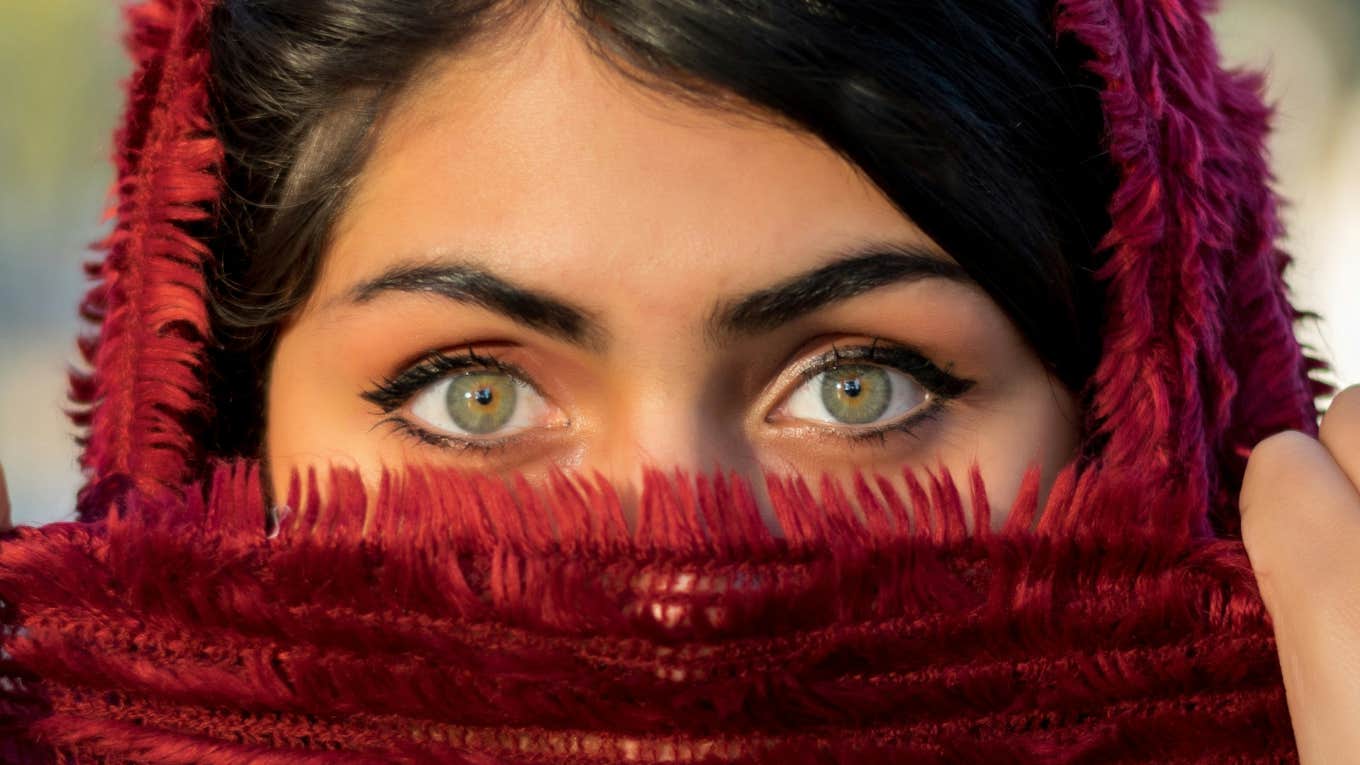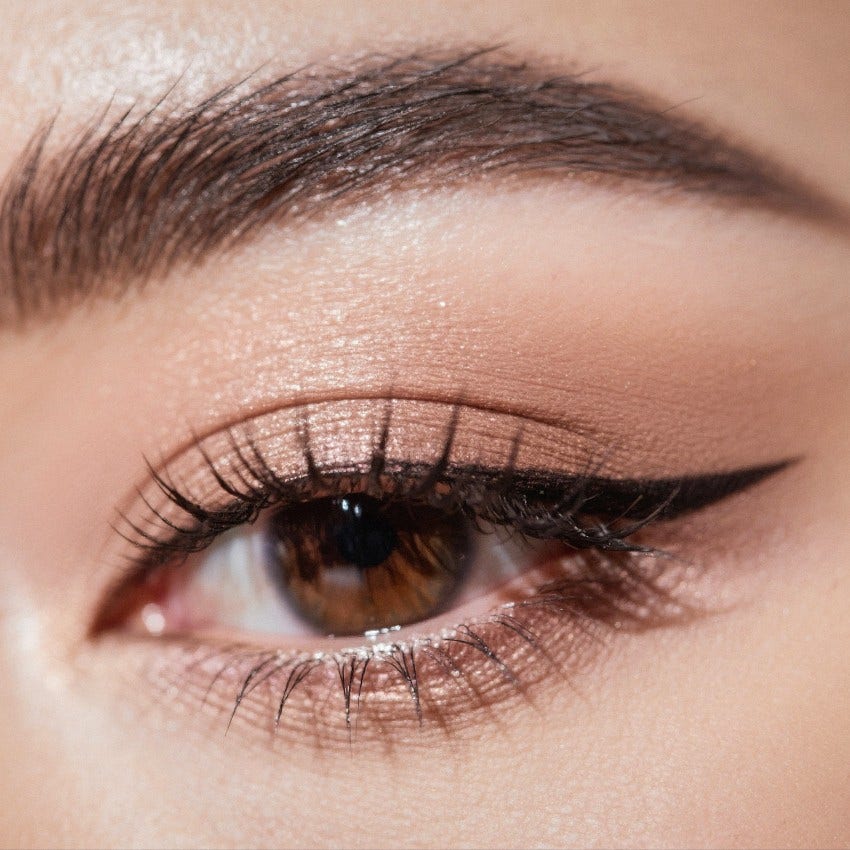Science Confirmed There’s Only One Real Eye Color — And We All Share It
What we call different eye colors may actually be optical illusions.
 Abolfazl Eslami | Unsplash
Abolfazl Eslami | Unsplash Science is a weird and fascinating world. If it isn’t contributing to amazing inventions, radical new technologies, or trying to solve the medical mysteries of the world, it can also reveal facts we don't necessarily like all the time. If it’s not proving that the dinosaurs all sort of looked like giant chickens and didn’t roar, or taking Pluto’s planetary status away, science gets personal to prove that people with “unique” colored eyes really just have brown eyes beneath it all.
That's right — everyone started with brown eyes. Research confirms that brown melanin is the only pigment that exists in the human eye; there is no pigment for hazel, green, or blue.
Science confirmed there’s only one real eye color and we all share it: brown eyes.
 Merch Hub / Shutterstock
Merch Hub / Shutterstock
Blue eyes? Green eyes? Hazel eyes? Gray eyes? Well, science says your eyes are actually brown.
Dr. Gary Heiting is a licensed optometrist with more than 30 years of experience as an eye care professional, optical industry executive, health care editor, and eyewear industry consultant, and is the senior editor of an eye care website called All About Vision. According to Heiting, “Everyone has melanin in the iris of their eyes, and the amount that they have determines their eye color. There’s really only (this) one type of pigment.”
Melanin is the pigment that’s in your hair and skin as well as your eyes, and the color is — you can probably guess it — actually dark brown. Melanin absorbs light, so when there is a lot of it present, it can absorb more and appear darker. Hence, darker hair, skin color, and yes, even eyes, have larger amounts of melanin present.
Heiting adds, "It's an interaction between the amount of melanin and the architecture of the iris itself. It's a very complex architecture."
When it’s in the eye, higher melanin levels make the iris (the colored part of the eye) actually appear brown, because it’s absorbing a lot of light, and less light gets reflected out. Conversely, if you don’t have a lot of melanin in your eyes, your eyes will appear lighter because they’re reflecting more light back.
The color brown is a result of a high concentration of melanin in the iris, causing more light to be absorbed and less light to be reflected. People with brown eyes make up between 55 and 79% of the world and are the most common eye color. Green is the rarest eye color.
Does eye color change in babies?
Blue eyes are said to have the least amount of pigment of all the eye colors. So, although a baby's eyes may appear blue when they're born, they will probably develop more melanin later on, causing their eyes to become darker in color.
Heiting says, "As a baby develops, more melanin accumulates in the iris." The actual process is called “scattering,” and the light that your eye reflects happens to bounce back on shorter wavelengths that appear on the blue side of the spectrum of light color.
What is the difference between brown eyes and hazel eyes?
Brown eyes and hazel eyes are normally grouped into the same category, when, in fact, they are quite different. The melanin levels of brown and hazel eye colors are very unique compared to other eye colors, like blue.
Both hazel and brown eyes have a normal level of melanin presence in their back layer. But at the front layer, brown eyes have a high concentration of melanin, while hazel eyes have a greater presence of green.
Therefore, people with hazel eyes have two dominant pigments (eumelanin and pheomelanin) interacting with each other, which causes the color to constantly change.
What is special about brown eyes?
Apparently, brown-eyed people have great health benefits due to their eye color.
For example, people with brown eyes are less likely to develop macular degeneration due to age when compared to people with light eyes. People with brown eyes also have a lower risk of having type 1 diabetes or melanoma of the eye in comparison to lighter-eyed individuals.
However, people with dark eyes are more likely to get cataracts. A study from the early 1990s conducted research into the risk factor of brown-eyed people getting cataracts. Researchers found that brown-eyed people are more than twice as likely to develop cataracts in old age than those with light eyes.
The study was published in the American Journal of Ophthalmology, where researcher Robert Cumming, Ph.D., explained, "According to our research, those with darker eyes are at greater risk, whether they're sun worshipers or not."
Are brown eyes attractive?
1-800-Contacts surveyed in September of 2019 to determine the most attractive eye color in the U.S. They surveyed 1,000 people of different genders, ages, and orientations to figure out people's perceptions of eye color.
The study found that gray eyes were both the rarest and the statistically most attractive eye color. Hazel and green were close seconds. Brown eyes, however, were found to be the most common yet the least attractive to the survey's participants.
But don't let that get you down. Apparently, due to the way brown eyes are made through flecks of color, no set of brown eyes is the same as another person's. Therefore, brown eyes are unique in their own way.
Why do I have dark brown eyes?
According to the American Academy of Ophthalmology, "The iris is made up of two layers of muscle and other kinds of cells. In most people, the back layer has at least some brown pigment in it, even if their eyes don't look brown. In people with brown eyes, the iris’s front layer also has some brown pigment in its cells. The more melanin there is in the iris, the darker brown it will be."
The color of a person's eyes can also be influenced by their location. Dark brown eyes are most common in Africa, East Asia, and Southeast Asia; light brown eyes are found in West Asia, the Americas, and Europe. This is due to the high melanin levels meant to protect the hair and skin from the sun in these hotter regions.
One theory is that eye color evolution may also be traced back to earlier times. People used to need more melanin in their bodies to protect them from hotter climates, but as people moved to less sunny locations, that need has changed.
Another theory suggests that it may be the cause of a common mutation. "It's believed that's how blue eyes came about, but it may just be the de-emphasis on the need for all the melanin," Heiting says.
16 genes determine eye color, but two are truly essential
Many once believed that eye color was solely determined by one gene, which yes, genes do play a role in eye color. However, there are several genes that come into play when determining eye color.
"Several genes influence eye color. It's not something you can predict with ease," Heiting adds. There is a total of 16 genes that determine eye color, but it is mostly attributed to two adjacent genes on chromosome 15, protein 2 (HERC2) and ocular albinism (that is, oculocutaneous albinism II [OCA2]).
There is the substance that OCA2 produces, which helps determine eye color: P protein, which works to mature melanosomes. Melanosomes are a type of cellular structure that work to store and produce melanin. Since brown eyes have a lot of melanin, they have higher levels of P protein.
HERC2 has a region referred to as intron 86. Within this region is a DNA segment that controls OCA2 gene activity. Basically, HERC2 turns the OCA2 gene off or on when it's necessary. With higher OCA2 activity, your eyes will be darker.
To debunk a myth about brown-eyed parents only having brown-eyed kids, since so many genes are at play, parents can actually have children with an eye color neither of them possesses! Research shows that eye color is a polygenic trait involving multiple genes interacting in complex ways, meaning that even though we all share the same brown melanin as our base pigment, the infinite variations in how much we have and how light interacts with our eyes create the stunning diversity we see.
That's genetics for you. So, yes, the reason that your eyes look green, brown, gray, or any other color is probably because you’re actually lacking melanin in your irises.
Merethe Najjar is a professional writer, editor, and award-winning fiction author. Her articles have been featured in The Aviator Magazine, Infinite Press, Yahoo, BRIDES, and more.

